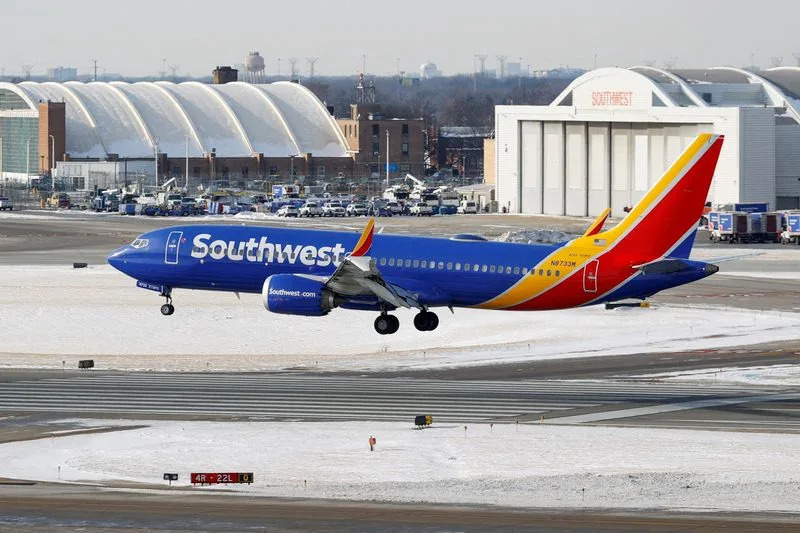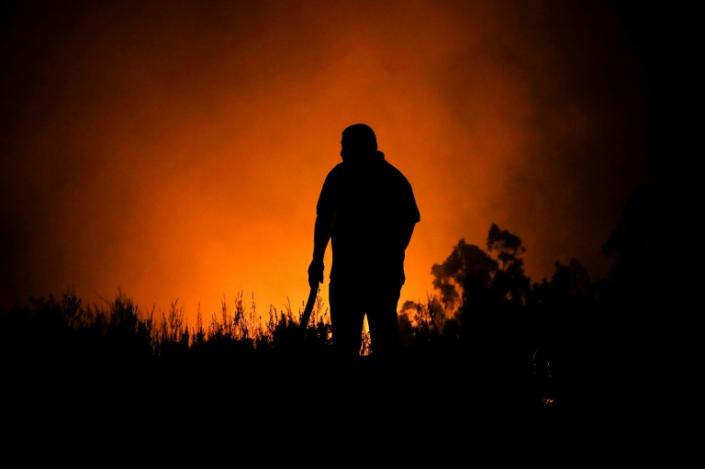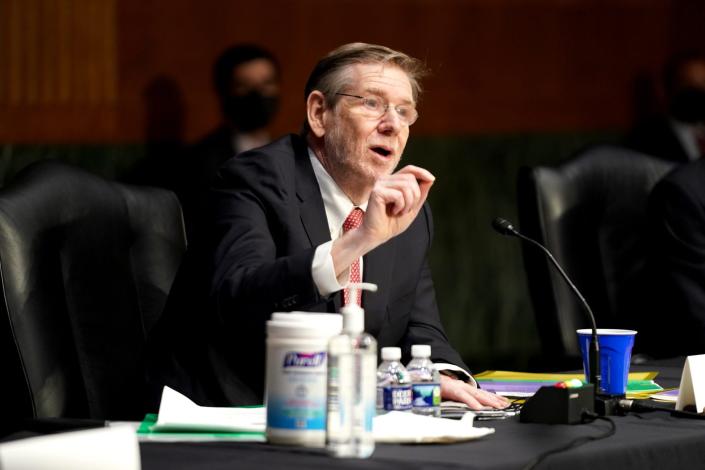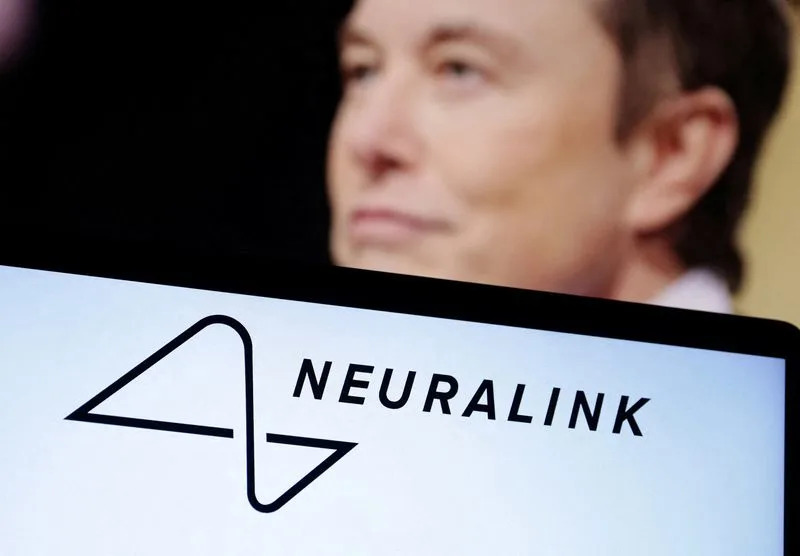Joe O'Connor
Thu, February 9, 2023

no0208new-flyer
It was Paul Soubry’s final day of vacation, and among the things he had learned after two weeks of sunshine and four rounds of golf in Palm Springs, Calif., was that he wasn’t much of a golfer after all.
“I am terrible,” the chief executive of NFI Group Inc., a.k.a. New Flyer, the Winnipeg-based public transit bus manufacturing giant, said in late January.
Soubry did everything he possibly could in his final outing to be less terrible, such as executing a couple of “foot wedges” — that is, nudging the ball with his foot into a more favourable position — and allowing himself at least one mulligan, golf-speak for an outright do-over.
Depending on the company one keeps and the seriousness of the individual player, a mulligan can spell the difference between a truly bad, lost-in-the-woods shot and a perfect swing that sends the ball soaring straight onto the green. Alas, all Soubry had to show for his foot wedges and do-overs was a scorecard with a 97 scratched on it.
“I am officially retiring,” he said.
Soubry, of course, is not retiring from his day job, although given NFI’s debt-battered balance sheet, inflation shocks, ongoing supply chain challenges and the gut-wrenching decisions the guy in charge has had to make in laying off 400 Manitoba-based employees since March 2020 — 30 of whom received their pink slips right before Christmas — it would be perfectly understandable if he announced his vacation was of the permanent kind.
But the 60-year-old is no quitter, nor is he seeking a few corporate mulligans. The 90-plus-year-old Manitoba manufacturer he runs has a global reach and a dominant share of the predominantly unglamourous market for public transit buses in North America and the United Kingdom.

Paul Soubry, chief executive of NFI Group Inc., which owns New Flyer.
Nevertheless, NFI finds itself at a crossroads, mostly because the pandemic’s fallout has caused supply chain traffic jams and a stalled share price that has investors wondering whether Soubry — a dedicated pick-up hockey player and diehard Winnipeg loyalist with a keen sense of place and burning local pride — can turn this bus around in time to make it profitable again.
On Soubry’s watch during the past 14 years, NFI has weathered a Great Recession, streamlined its production processes, consolidated the North American bus manufacturing industry and expanded into Europe.
The company got into electric buses early, positioning itself to be the Tesla Inc. of mass transit before net-zero pledges were even a thing among politicians, and before billions of dollars in new government funding had been made available to accelerate mass transit’s green transition.
The company’s share price soared to almost $60 for a spell in 2018, but a global emergency crashed the party, creating a situation where the busmaker struggled to get all the required parts to make its buses, a situation that continues to this day.
Things were getting so grim that NFI secured a pair of government loans in late 2022 — $50 million from Manitoba and $150 million from Export Development Canada — to preserve its liquidity and protect against further job cuts.
It is hard to see what NFI would have done differentlyCameron Doerksen
This wasn’t some sacred Canadian corporate cow grubbing for government money to prop it up by using the pandemic as a convenient excuse for all its financial woes. NFI had a track record of being in the black, and generated more than $725 million in revenue and $15 million in profits in the third quarter of fiscal 2019, a few months before the world fell apart.
Recent earnings calls have been decidedly less upbeat, as revenues slumped to $514 million in the third quarter of fiscal 2022, and what once were profits are now counted as losses to the tune of $48 million.
“The company has faced some fairly significant challenges in the past few years and, to be fair, a lot if not most of the challenges were from things out of their control,” Cameron Doerksen, a transportation sector analyst at National Bank Financial, said. “It is hard to see what NFI would have done differently.”
But it is what Soubry does next to prevent the challenges of the past few years from becoming an existential threat that drives NFI off an economic cliff that will count.
Fortunately, the boss isn’t one to get too fussed when day-to-day circumstances get bumpy. There is a painting of a car’s dashboard hanging above his desk. The painting is no masterpiece, having been bought for $59 from the “scratch and dent” section at Winners, but he bought it because of something his father used to say.

There is a painting of a car’s dashboard hanging above Soubry’s desk.
Paul Soubry Sr. was chief executive of Winnipeg-based agricultural equipment maker Versatile, and he inspired his son to become a “business guy.” Dad died in 2010, but he told his son that if you only run a business by “looking at the gauges,” you are going to lose sight of the big picture.
Put another way, things might be fine in the immediate term, but if you are not looking ahead to where you are going, and in the rear-view mirror from where you have come, then you never really know what direction you are headed in. That’s why, despite all the recent challenges, what Soubry sees ahead is a massive, unprecedented opportunity.
“We haven’t had any cancelled orders, we haven’t had anybody say, ‘Screw you, I’ll go buy from one of your competitors,’” he said. “They want our product.”
The pandemic messed things up in the short term, but the even bigger mess humanity has made of its environment has had some long-term benefits for NFI. Transit authorities in North America and Britain are flush with government cash to help them transition away from fossil-fuel-burning buses to low- and zero-emission vehicles.
But buying a bus isn’t like buying a car. Joe Consumer isn’t kicking the tires and paying the sticker price on a single vehicle; it is cities, with a little help from their wealthy friends, buying in bulk.
New Flyer is going to feed the beastDimitry Anastakis
The United States federal government has committed US$2.23 billion in new federal grant money for transit authorities looking to green their fleets, and it will cover 80 per cent of the purchase price of a US$ 1.1-million New Flyer electric bus. Canada has a $1.5-billion Zero Emission Bus Initiative, and the United Kingdom has a partially government-funded commitment to put 4,000 electric buses on the road by the end of 2024.
The demand and the guaranteed money behind it are reflected by the more than 8,000 buses NFI currently has on its order books.
“New Flyer is going to feed the beast,” Dimitry Anastakis, an automotive historian at the University of Toronto’s Rotman School of Management, said. “There have been a lot of big announcements about the shift to EVs among the Big Three automakers, but New Flyer has already been doing this for five years, and it’s kind of gone under the radar.”
Perhaps that’s because public transit isn’t as sexy as that slick new electric passenger car silently ghosting past you at an intersection. Zero-emission buses aren’t cool; they are utilitarian, and much more like a piece of vital urban infrastructure than a vehicle for personal expression.

What stands out about New Flyer, said Andy Biesterveld, chief engineer at the Central Ohio Transit Authority, is the company’s long track record of manufacturing reliable buses.
“We knew that we would not have any quality issues,” he said. “New Flyer is first and foremost a bus company. They know how to make buses.”
COTA has been buying exclusively from NFI since 2019, about 100 buses in total. If you take the bus in a major North American city, there is a decent chance it is a New Flyer. Toronto, Ottawa, Vancouver, Calgary, New York, Miami, Los Angeles and San Francisco all have the company’s buses on their roads.
“New Flyer is a major player and it’s something most people, at least outside of Winnipeg, don’t recognize,” Anastakis said.
Soubry doesn’t exactly rate as a household name either. For the record, he doesn’t take the bus to work when he is home in Winnipeg, but often hops on public transit when in other cities on business, so he can pump the bus driver for information. No one offers better feedback on a bus, he said.
Here is something you probably don’t know: public transit buses are highly customized vehicles. No one bus fits all. Every transit authority that places an order with NFI has a list of specific wants. The door that works great for COTA might not work for Los Angeles. Seat design, layout, number of cameras, camera positioning, doors, window tints, panel colouring, air conditioning capabilities, defroster models and drivers’ seats are all particulars NFI has to deliver upon, no matter how different one order batch is from the next.
The orders arrive for tens, maybe hundreds, of buses, a scale that left NFI particularly vulnerable to the supply chain chaos caused by the pandemic’s onset, which shuttered factories and generally sent people home, where they started ordering every type of electronic gadget they could get their hands on.
This created an unprecedented demand for microchips, those tiny components that are key for everything from your smartphone and your smart television to your made-in-Winnipeg smart electric bus. As manufacturing ramped up, the race for those chips was on.
Since NFI does custom builds and small-batch orders, it couldn’t compete for the required parts, because suppliers were too busy filling bigger orders. By the time the parts did become available, inflation had driven up the price.

Public transit buses are highly customized vehicles.
“We don’t have a demand concern, we have a supply constraint that has been hell, but that is getting better,” Soubry said. “But we still have a number of buses that have been built and are literally in parking lots waiting for spare parts to finish.”
Much as he loves buses, it is little wonder that Soubry needs to blow off a little steam every now and again. That’s when he can rely on old friends, such as Tim Steadman, to help with the cause.
The two met as students at the University of Manitoba’s Asper School of Business. Steadman, now a financial adviser, became a sales representative for Xerox Holdings Corp. upon graduating, while Soubry quickly established himself as a 20-something-year-old rockstar executive at StandardAero Holding Corp., an aerospace company he eventually ran before he became a bus guy.
“Paul was extremely impressive from a young age,” Steadman said. “Honestly, he works incredibly hard, and I am not just saying this, but you knew he was someone who was going places.”
Where Soubry religiously goes Sunday mornings is Oak Bluff Arena for a 9:15 pick-up hockey game. Steadman is the game’s organizer, and has been for 30 years. The regulars are a mix of accountants, lawyers and business types.
Among this crowd Soubry is known simply as Soubs, and is identified not by his high-profile job, but by his ability to still go end to end with the puck, despite having packed on a few extra pounds since his mid-20s.
“Paul can pretty much play anything. He was on the University of Manitoba basketball team,” said Steadman, known as Steady, among his hockey mates.

Every transit authority that places an order with NFI has a list of specific wants.
In a perfect, not-too-insanely-busy for hockey week, Soubs plays as many four times. He is also a Winnipeg Jets board member, and takes particular delight in terrorizing NFI colleagues unfortunate enough to count themselves as Toronto Maple Leaf fans.
Of all the guys in the Oak Bluff skate, it is Soubs, the one with the most time-demanding job, who instantly responds to Steadman’s Monday morning group email checking on player availability for the following weekend.
“He responds within a minute,” Steadman said.
Soubry’s love of hockey extends to his love of place: Winnipeg is home, and he identifies with its scrappy, us-against-the-rest-of-Canada identity, and its big-city-but-small-town feel. He rolls his eyes at outsiders’ wisecracks about the weather and the bugs.
Within this milieu, he is acutely aware that NFI isn’t just another business, but an international conglomerate born, raised and headquartered in Winnipeg that employs about 2,500 people locally, and rates as the heavyweight busmaker in the fight for market share in North America and the U.K.
Soubry takes it personally when times are tough, supply chains are snarled, the company’s share price is spinning its wheels around the $10 mark, creditors are waiting to be paid and workers are getting laid off. These are people he knows. People with families who he runs into at the rinks and grocery store.
“It is awful,” he said.
Why Sophie Brochu's Hydro-Quebec exit may be more about philosophy than politics
But the way Soubry sees things, this is just the beginning, and all the employees who have lost their jobs are going to be hired back once the factory ramps up production “later” in the year.
There is genuine cause for optimism. The zero-emission revolution is raging in municipal transportation, backed by public dollars and underwritten by government pledges to achieve their climate-change goals.
“The demand is there,” Doerksen, the analyst, said.
The bus just needs to get rolling again, with the newly retired golfer behind the wheel.
“We think we have hit rock bottom,” Soubry said. “We are now ramping our volume back up, we are now getting supply chain, we are way smarter, we haven’t lost business and we have this huge order book to execute on.”
• Email: joconnor@nationalpost.com | Twitter: oconnorwrites






.png)
